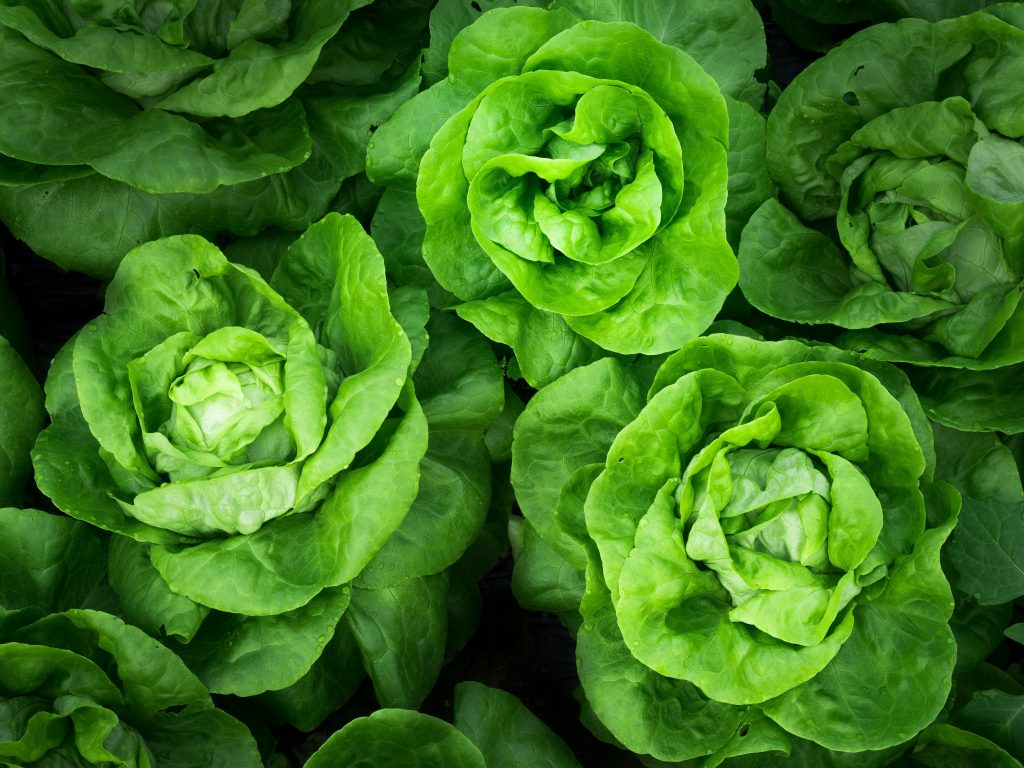All fields are required
Posted in E. coli,Outbreaks & Recalls on May 3, 2018

Put the Romaine Lettuce down before somebody gets hurt. The E. coli toll linked to every Cesar salad lover’s favorite leafy green has jumped in numbers as well as states, meaning this outbreak is a nationwide problem that concerns all veggie-lovers. How big of a problem? Let’s just say half of the states in the United States are involved, and the numbers just keep growing. (Seriously, no pun intended).
Outbreak!
The lettuce contamination conundrum continues with 121 reported cases of illness, one of which resulted in a death. Of those who are sick, 52 have been hospitalized and 14 have developed hemolytic uremic syndrome (HUS) – a sometimes fatal complication of an E. coliinfection. Unlike many ailments that tend to affect the youth and elderly more severely, this illness eruption has taken a slap at a large range of ages, from one to 88 years-old with the median sitting at 29. With three more states added to the roster of illness reports, Kentucky, Massachusetts, and Utah, the numbers of states contaminated have spiked to a whopping 25.
Ouch! It looks like half the country is on watch, or should be paying close attention. Without nailing down the exact source of the E. coli origins (or where in the food chain the contamination may have occurred), that number is likely to increase. So, be wary of this healthy-eating habit for the time being and seek alternatives. Trust be, there are other greens you can eat while we all wait this outbreak out.
What and Who is to Blame?
Sure, not all our scrumptious lettuce is contaminated; however, Romaine Lettuce from the Yuma, Arizona region is a red-flagged with the E. coli pathogen. So, unless you can track the road your lettuce took to arrive on your plate, consider other options of sustenance. Currently, the exact source of contamination is still up to debate, but with Arizona and California being the lead distributor of lettuce, the problem is growing from the ground and spreading onto dinner tables across the country. (Again, seriously no pun intended!)
The difficulty in isolating the origins of the E. coli bacterium is the complex distributing process from one buyer to the next. This means that tracing your lettuce’s journey won’t be an easy task. This means, as the local health agencies, and CDC, and the FDA continue their traceback investigations, they may (and likely have) run into problems. According to an AZ Central interview with Jeff Saleen of Bonipak Produce, the distributors are struggling with the delay of information, and frustrations are mounting,
Lettuce Though? Seriously?
Right, I get it, you were always told E. coli is more of a meat thing. Let me explain.
Firstly, packaged, whole, and even chopped produce comes into contact with a bevy of hands before it makes it to your local grocery store. Just think about how many people or places a leafy green has been touched by or transported to in order to make it onto your plate. Production lines mean hands-on integration. They are harvested by people. Transported by people. Sent to a slew of facilities or other locales that may have cleaned, contaminated, cut, sliced, diced, and packaged them before they get to you.
But This is a Rare Outbreak, Right? Things Like This Just Do Not Happen.
Sadly, this is more common than one would think. This isn’t the first time leafy-greens have a history of contamination. Between 1998 and 2008, these delectable vegetables have been responsible for 22 percent of foodborne illnesses.
For those of you who prefer unpackaged produce, you’ll need to keep your eyes on the ground as well as the news. That’s because E. coli and Salmonella, can be transferred from irrigation water and manure right into the roots of a lettuce crop via the plant’s soil. So, what starts at the root, distributes throughout the plant tissue, making the edible parts a “no-go” on the food train. This also means a good washing won’t help protect against the E. coli; though, a wash can help diminish pesticides and ground material, so keep at that for your other produce and in your lettuce future.
Right now, fresh salads are out, unless you get clever with your Romaine Lettuce substitutions. During this outbreak it’s best to stick to cooked produce. E. coli bacteria is destroyed at 160° F, making heat your best friend against foodborne pathogens. Yes, you can cook lettuce, but you might struggle getting an accurate temperature reading.
If you’re a bit worried about your pre-dinner salad that you had last night, keep in mind symptoms of E. coli tend to show about 24 to 48 hours after consumption. It’s a good idea to keep watch for another 10 days. Symptoms such as: diarrhea, abdominal pain, and vomiting, are a reason enough to contact your doctor.
I know the “When in doubt, throw it out” slogan is a bit of a trope, but I’ll take a trope over E. coli triggering hemolytic uremic syndrome (HUS) that affects the blood vessels and leads to kidney failure. I’m a pretty big fan of my kidneys, so a salad will just have to take a backseat to soup until the Centers for Disease Control can get a handle on this lettuce situation.
By: Heaven Bassett, Contributing Writer (Non-Lawyer)